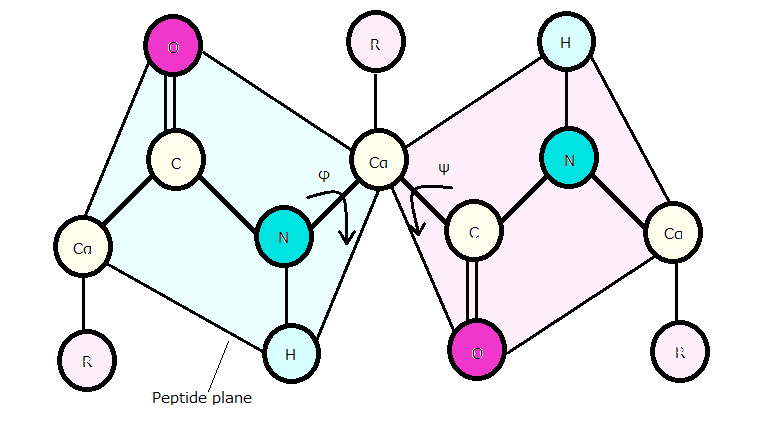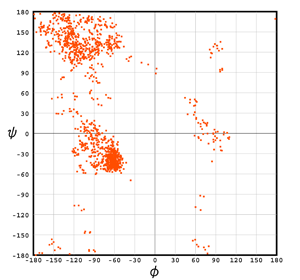About the Dihedral Angle Calculator
The Dihedral Angle Calculator is a powerful online
tool for analyzing protein structures by calculating Phi (φ) and Psi
(Ψ) dihedral angles for every residue in a given protein. Simply
upload a .pdb file or enter a PDB ID to quickly compute
these angles and generate a detailed Ramachandran Plot.
Designed for researchers, educators, and students in
bioinformatics and structural biology, this tool offers an intuitive
interface for exploring protein conformations. Results can be viewed
in an interactive table or downloaded in popular formats like
CSV, Excel, PDF, and TXT, making it easy to integrate
with your research workflow. Enhance your understanding of protein
folding, dihedral angles, and molecular interactions with this
indispensable tool for protein structure analysis. Whether you're
studying protein dynamics or conducting biochemical research, the
Dihedral Angle Calculator provides precise and accessible insights for
better scientific discovery.
How to Make the Most of This Tool
Choose your Input Method
Upload or Select .pdb files for processing.
Angle Calculation
Phi and Psi angles will be automatically calculated for all residues by the tool.
Ramachandran Plot
A Ramachandran Plot will also be generated.
Interactive Table
The results will be viewable in an interactive, scrollable table.
Download Options
The results will be available in CSV, Excel, PDF, and TXT formats.
Tips for Success
Ensure accurate PDB IDs and file size within 50 MB.
What is Dihedral Angles
A dihedral angle in a protein refers to the internal angle formed between two adjacent planes of the polypeptide backbone. The backbone connects amino acids through peptide bonds, forming a chain. The shape of this backbone, how it bends and twists, determines the overall structure and function of the protein.
The backbone between two neighboring Cα atoms lies in a single plane, and the conformation of the backbone can be described using two dihedral angles for each amino acid residue. These angles are called φ (phi) and ψ (psi):
- φ (phi): Involves the atoms C-N-Cα-C, describing the rotation around the bond between the nitrogen and the Cα atom.
- ψ (psi): Involves the atoms N-Cα-C-N, describing the rotation around the bond between the Cα atom and the carbonyl carbon.

The values of φ and ψ are restricted by steric hindrance, which happens when atoms interfere with each other’s space. Atoms such as the carbonyl oxygen, hydrogen of the NH group, and side-chain atoms limit the angles, ensuring the protein folds into a stable and functional shape.
The way a protein folds is influenced by these dihedral angles. Proteins must adopt specific shapes to perform their biological functions, such as catalyzing reactions or binding to other molecules. By studying φ and ψ angles, scientists can predict how proteins will fold and their functions.
What Is a Ramachandran Plot?
A Ramachandran plot is a graphical tool used to visualize the relationship between φ and ψ angles in a protein. It helps researchers understand the allowed and forbidden regions of these angles, showing which combinations are physically possible in protein structures.
The plot has key regions corresponding to the two most common protein conformations:
- Alpha helix (α helix): Found around the coordinates (-60, -50) in the plot. This structure forms a right-handed spiral.
- Beta sheet (β sheet): Found around (-120, 120). The protein backbone forms flat, extended sheets.
- Left-handed α helix: A rare structure, found around (60, 60) in the plot.
By analyzing a Ramachandran plot, researchers can verify if a protein’s conformation is stable and realistic, ensuring that proteins fold correctly to perform their functions.

Frequently Asked Questions

Get in Touch
Got questions or feedback? We’re here to help! Fill out the form below, and we’ll get back to you as soon as possible.
Share the Dihedral Angle Calculator
Help others discover the Dihedral Angle Calculator by sharing it on your favorite platform!